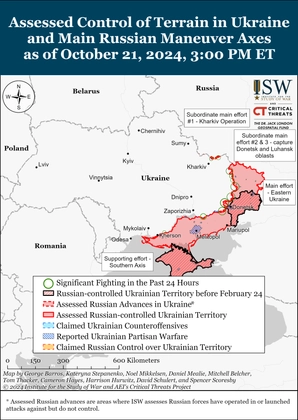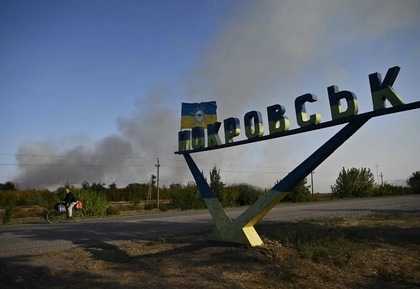Ukraine’s war effort following a full-on Russian invasion and saturation bombing campaign for 20 months is remarkable and has surprised the world. Western backing has been key, but Ukraine is special. It was the Silicon Valley of the Soviet Union and where most of its space, weaponry, and scientific advances were made. Since Russian tanks rolled on February 24, 2022, Ukrainians have become a cohesive force and have digitized warfare. They are inventing drones and conducting cyber attacks that have undermined Russia, psychologically as well as militarily. Such expertise shouldn’t surprise. Ukraine has the highest literacy rate of any country in Europe, at 99.97 percent, and an educational system emphasizing “hard” sciences and mathematics. They have an agrarian work ethic and are risk-takers, resilient, egalitarian, inventive, gifted in engineering and mechanics, and tech savvy. For example, Ukraine’s President Volodymyr Zelensky is a lawyer who became a media mogul, but his father is a famous professor and computer scientist and his mother an engineer. And he has assembled a team of technologists who are reinventing warfare. Ukraine’s ultimate strategic edge is grit, but, explained an Ukrainian intelligence spokesman, it’s also that “Russia's equipment is from the 20th Century, ours is from the 21st.”
Ukraine has a disproportionate number of engineers and IT [Information Technology} workers compared to Russia or other European nations. Before the second invasion in 2022, Ukraine already had an “army” of more than 300,000 world-class software developers, engineers, and architects. It had one of the world’s the largest IT outsource sectors with companies that built software and devices for Western governments and Fortune 500 corporations. Ukraine was a center of excellence for development of simulation technologies used by Disney and the Pentagon and gaming companies alike. And all of this expertise is why, immediately after Russians launched their incursion and bombed telecoms facilities, prominent Ukrainian technologists reached out to Elon Musk and obtained access to his Starlink satellite system which has kept the country online ever since.

ISW Russian Offensive Campaign Assessment, October, 22, 2024
JOIN US ON TELEGRAM
Follow our coverage of the war on the @Kyivpost_official.
In February 2022, Ukraine fully mobilized. It conscripted its males and encouraged millions of its women and children to evacuate to other countries. It quickly built and trained an army while keeping the lights on. Ukraine still remains outgunned and outmanned, in a traditional war sense, but its technology and brainpower has helped close the gap concerning its manpower limitations and small airforce and navy. Years before this war, Ukrainians had become, like Estonia, technologically advanced. Its population had smart phones. It had developed “e-governments” that allowed citizens to obtain documents, monitor budgetary or political decisions, and provide access to government services electronically. After the Russian attack, Ukraine distributed an app to alert citizens about incoming attacks, provide news updates, issue evacuation plans, and pinpoint the location of bomb shelters and assistance centers.
All Ukrainians were deputized to use their devices to tip off or video Russian military movements, atrocities, collaborators, and facilities. Commanders came to rely on data, provided by civilian drones and Google Maps, to identify Russian forces in the early days of the war. Now Ukraine is linked to NATO’s sophisticated satellite surveillance, but in the beginning volunteers using hobby drones acted as scouts and artillery spotters. Even street cameras in stores or gasoline stations were accessed to track the flow of troops and weapons in occupied or disputed areas.
From the beginning of the catastrophe, Kyiv enlisted and supported tech teams, tech laboratories, start-ups, and research efforts in collaboration with its military. This has led to the creation of unique drones for surveillance, attack, and battlefield triage; cybersecurity defense and offense operations; robotized weaponry; de-mining tractors; electronic and jamming superiority, and a fleet of lethal seaborne drones. These efforts — along with massive help from allies — has amplified the effectiveness of Ukraine’s small air force and navy.
Ukraine’s digital ministry built a “drone” army of 10,000 drone pilots. Another 10,000 are being trained and thousands more are involved in projects aimed at revolutionizing or acquiring unique weaponry. A recent example is the repurposing and deployment of dozens of “cardboard” or lightweight Australian drones, costing $3,500 apiece and capable of carrying a payload of 5 kilograms of explosives. Swarms were unleashed on August 30 against six targets in Russia and Crimea. At one airfield, 700 miles inside the Russian border, six military transport aircraft, five fighter jets, a military unit, four cargo planes, and radar and air defense systems were damaged or destroyed. Now these drones, and other more powerful ones, attack Russia daily and nightly, sparking anxiety and using up Russian air defence ammunition.
 |
“Every morning I start by watching a video of the enemy equipment destroyed by our ‘birds’,” Mykhailo Fedorov told Newsweek. He is Ukraine’s Vice Prime Minister for Innovations and Development of Education, Science, and Technologies as well as its Minister of Digital Transformation. “Their results are truly impressive. With a few thousand dollars' worth of drones, they destroy millions in Russian hardware.”
Ukraine has also developed a fleet of sea drones that intends to "paralyze" Russia’s Black Sea fleet. Many are “kamikaze” or single-purpose weapons that are destroyed along with their target. Last month, a sea drone loaded with explosives hit a warship, knocking it out of commission for 3.5 months because the blast damaged its electronics system. Another large ship was knocked out of service permanently after a sea drone carrying 1,000 pounds of TNT struck its bow. Smaller drones are launched from speed boats and a new underwater “suicide” drone had been developed that is faster than anything else, is undetectable, has a range of 1,000 kilometers, and carries a payload of hundreds of pounds of explosives. It is remotely controlled by a drone pilot on a gaming console, linked to satellite surveillance.
Ukraine’s drone navy has twice forced the Russians to close their Kerch bridge and relocate most of their fleet from Crimea to a Black Sea port in Russia which is also being regularly assaulted. Drone attacks inside Russia and the Black Sea region have accelerated since Moscow began attacking Ukrainian agri-businesses, grain ships, ports, and storage facilities. And Kyiv’s exploding marine drones recently struck a Russian oil tanker, aimed at disrupting the oil exports that keep the Putin regime financially afloat. "If Russia continues to dominate the Black Sea and block it with firing missiles, then Ukraine will do the same, which is a fair defense of Ukraine's," said Zelensky.
On land, Ukraine is rolling out a new generation of “battle robots” able to cross Russian minefields, tank traps, or concrete bunkers — obstacles that have slowed Ukraine’s counter-offensive in the south. These unmanned “platforms” will also be used to evacuate injured troops and avoid risking the lives of comrades, and will be armed with automatic grenade launchers, machine guns, and anti-tank weapons. They will be piloted by operators who view the battlefield on screen, hidden from detection.
Ukraine also manufactures traditional weapons, and in late August Zelensky announced that it was producing its own long-range missiles. "A target was hit 700 kilometers away," Zelensky said. The U.S. has been reluctant to send such long-range missiles, lest they be used to directly attack Russia and trigger a direct confrontation with NATO. But earlier this year, the United Kingdom became the first to provide longer-range missiles then, in July, France announced it would also send dozens more.
As Transformation Minister Federov said recently “it is now clear that Ukraine has the potential to become one of the world’s top ten innovation-driven economies.” Clearly, it has already changed the world of war. “Our UAV [unmanned aerial vehicle] strike units are among our most notable `game-changing innovations’. We’ve already launched 11 such units. There will be more. They are working with a completely new approach to training, management, and doctrine of using drones on the front line."
This is Gameboy War waged by a smart nation. Casualties are staggering and disproportionately higher for Ukraine — Washington estimates 300,000 Russians wounded or killed and 200,000 Ukrainians — but no one knows for certain. And so far, David overcomes all odds while Goliath falters.
The views expressed in this opinion article are the author’s and not necessarily those of Kyiv Post.
Reprinted from [email protected] - Diane Francis on America and the World
See the original here.
You can also highlight the text and press Ctrl + Enter









